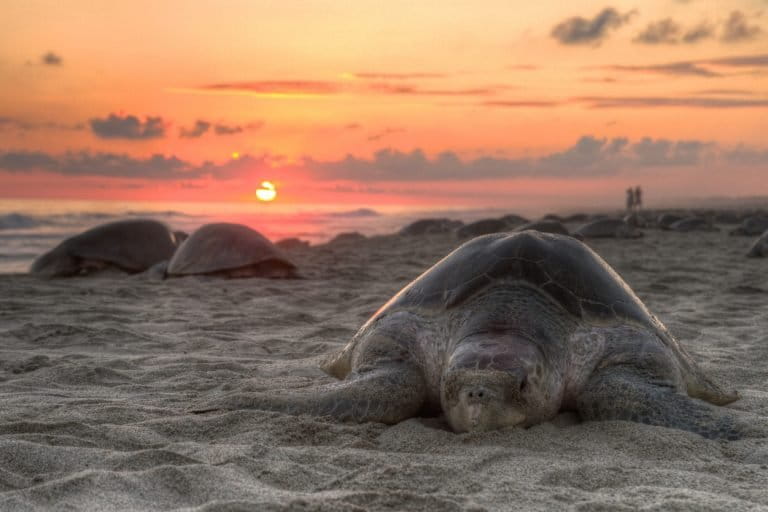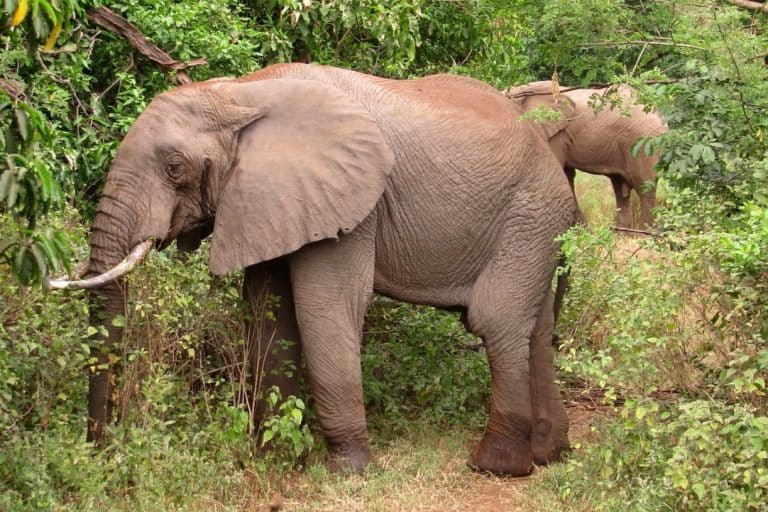- The Wildlife Crime Tech Challenge announced three winners of a $100,000 Acceleration Prize for rapid progress in developing a wildlife crime solution system.
- The winning devices were: an artificial sea turtle egg to track illegal movements of eggs and identify transit routes; a genetic reference map of pangolin poaching hotspots; and a camera-ground sensor system to monitor and communicate illegal human activity in remote reserves.
- The poaching, trafficking, and consumption of meat, scales, tusks, skin, fur, feathers, and horns of many hundreds of species has depleted populations worldwide and caused local extinctions.
The USAID Wildlife Crime Tech Challenge announced three winners of an Acceleration Prize worth US $100,000 for demonstrating rapid progress in developing a wildlife crime solution system. The Challenge previously announced prize winners for innovations designed to reduce wildlife crime in 4 categories:
- Strengthen forensic evidence
- Detect transit routes
- Tackle corruption
- Reduce consumer demand.
The InvestEGGator sea turtle egg tracker
A team from the NGO Paso Pacifico is testing and scaling up the concept of hiding tracking devices inside artificial sea turtle eggs to track the movement of eggs across borders. The seven species of sea turtle are endangered, in large part by the heavy consumption of their eggs, and trade in turtle parts or eggs is illegal.

Nevertheless, the eggs are harvested by often-poor coastal communities and smuggled to consumers, mostly in cities. Little is known about these transit routes.
Sea turtle eggs are soft and pliable, unlike hard-shelled bird eggs, so developing a mimic was a challenge that was met with the help of Hollywood special effects experts. The Paso Pacifico team tested and refined various artificial egg designs, internal transmitter and battery technology, materials, and production processes. They can now produce the artificial eggs using 3D printers and seal them with waterproof silicone.
“We have a prototype that is functioning using a GPS/GSM device and is hooked up to a cellular phone network and then placed into an artificial sea turtle egg,” explained Paso Pacifico’s executive director Sarah Otterstrom. “While those eggs are moving across transit routes, the artificial eggs are transmitting in real time their actual location.”

Location transmission depends on availability of mobile phone networks, which continues to expand. The idea is to enable conservationists and law enforcement to track the movements of the shipments, where the eggs remain for periods of time and perhaps change hands, and where they are sold.
The team has tested in one coastal site in Nicaragua and want to further test on beaches in other Central American countries. The team expects the artificial eggs to remain undetected for much of their journey, as most poachers raid nests at night, work rapidly to avoid detection by armed beach guards, and transmit the golfball-sized eggs in bunches.
A genetic reference map of pangolin poaching
A research team from the University of Washington is creating a global genetic reference map for pangolins, which are highly-trafficked because their scales are used in China for their supposed medicinal properties. The team is building the map using geo-referenced tissue samples from museums and wild dung samples located by detection dogs.
“We are developing genetic techniques to pinpoint the origin of large pangolin seizures to find out exactly where they were poached,” explained Sam Wasser, director of the University’s Center for Conservation Biology.

The genetic markers his team is developing can distinguish among populations of the eight pangolin species, which would provide location information about a given shipment of pangolin scales. The team aims to identify the major locations of pangolin poaching by matching the genetic markers of large seizures of contraband pangolin scales and meat with those in the reference map.
The markers will help authorities identify the source of large pangolin seizures and allow law enforcement to focus on the most at-risk pangolin populations.
The effort builds on the team’s earlier project to track large seizures of African ivory, which identified the Tanzania-Mozambique border and the joint Gabon- Republic of Congo-Cameroon-Central African Republic border as the sources of nearly all large ivory shipments from 2006 to 2014.
The tool, a genetic marker system and flexible computer software, aims to simplify the identification of a sample’s genetic sequences so that it can by more easily transferred to labs worldwide.
A monitoring and communication system for parks
A team from the Zoological Society of London and tech partners have developed a new version of its Instant Detect system, which is designed to detect intrusions into remote reserves by people or vehicles and sound an alarm to rangers and other parties.
The team has revamped an earlier version of the system, which was tested at several field sites, to improve its range and reduce both its size and costs to be usable in unfenced remote areas by teams with few resources. ZSL has advanced its system of low-power camera traps and seismic and magnetic ground sensors that are meant to be buried or hidden in vegetation and thus need to be camouflaged.

The cameras include algorithms to detect people and animals in the images. They and the other sensors communicate alerts of potential illegal activity to a central node that processes the detection data using a Raspberry Pi computer. The computer then sends the data via the Iridium satellite network to a secure server accessed by rangers or other users who could be anywhere in the world. The satellite communication enables the system to be deployed nearly anywhere, even underwater, and the normally high communications costs were contributed by Iridium at a discounted rate.
Like any monitoring system, a trained and ready patrol team must respond to alerts to translate information into action. The ZSL team hopes the Instant Detect system will improve the efficiency of wildlife monitoring as well as the speed of detection and subsequent apprehension of poachers.
All three systems are still under development, but this award was based on their encouraging progress to date. All have been tested and are looking for support and partners to scale their operation.
Banner image of a leatherback sea turtle on a nesting beach in the U.S. Virgin Islands by Claudia Lombard, US Fish and Wildlife Service














